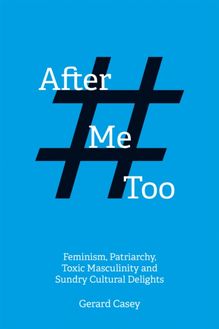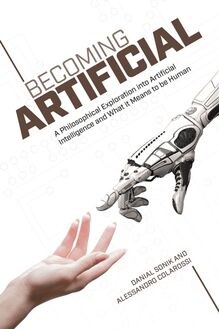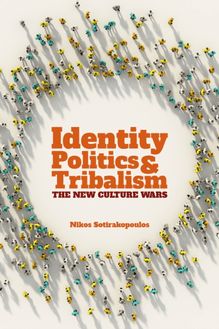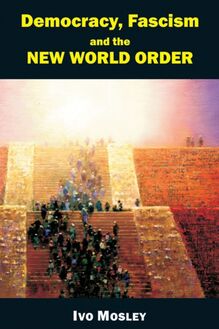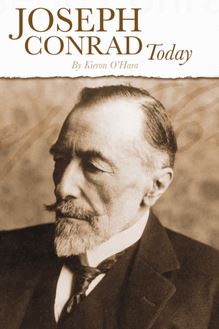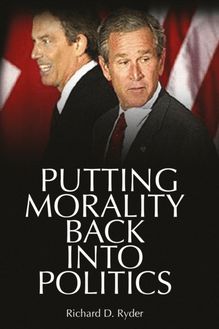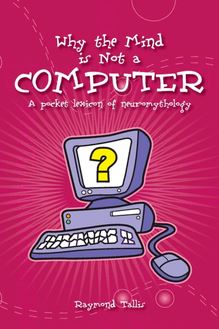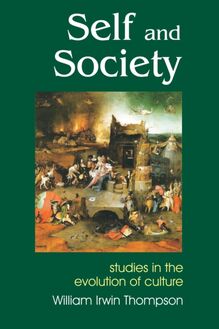-
 Univers
Univers
-
 Ebooks
Ebooks
-
 Livres audio
Livres audio
-
 Presse
Presse
-
 Podcasts
Podcasts
-
 BD
BD
-
 Documents
Documents
-
- Cours
- Révisions
- Ressources pédagogiques
- Sciences de l’éducation
- Manuels scolaires
- Langues
- Travaux de classe
- Annales de BEP
- Etudes supérieures
- Maternelle et primaire
- Fiches de lecture
- Orientation scolaire
- Méthodologie
- Corrigés de devoir
- Annales d’examens et concours
- Annales du bac
- Annales du brevet
- Rapports de stage
La lecture à portée de main
Vous pourrez modifier la taille du texte de cet ouvrage
Découvre YouScribe en t'inscrivant gratuitement
Je m'inscrisDécouvre YouScribe en t'inscrivant gratuitement
Je m'inscrisEn savoir plus
Vous pourrez modifier la taille du texte de cet ouvrage
En savoir plus

Description
Sujets
Informations
| Publié par | Andrews UK |
| Date de parution | 22 décembre 2020 |
| Nombre de lectures | 0 |
| EAN13 | 9781788360494 |
| Langue | English |
| Poids de l'ouvrage | 1 Mo |
Informations légales : prix de location à la page 0,0000€. Cette information est donnée uniquement à titre indicatif conformément à la législation en vigueur.
Extrait
Iconoclasm, Identity Politics and the Erasure of History
Alexander Adams
Foreword by Frank Furedi
Illustrated by the author
SOCIETAS
Essays in Political
& Cultural Criticism
www.imprint-academic.com
Published in 2020 by
Imprint Academic Ltd
PO Box 200, Exeter
EX5 5YX, United Kingdom
imprint-academic.com
Digital edition converted and distributed by
Andrews UK Limited
www.andrewsuk.com
Copyright © 2020 Alexander Adams
The right of Alexander Adams to be identified as the author of this work has been asserted in accordance with the Copyright, Designs and Patents Act 1988.
All rights reserved. No part of this publication (except for the quotation of brief passages for the purposes of criticism and discussion) may be reproduced, stored in a retrieval system, or transmitted, in any form or by any means without the prior written permission of the publisher, nor be otherwise circulated in any form of binding or cover other than that in which it is published and without a similar condition being imposed on the subsequent purchaser. Any person who does so may be liable to criminal prosecution and civil claims for damages.
The views and opinions expressed herein belong to the author and do not necessarily reflect those of Imprint Academic or Andrews UK Limited.
Every record has been destroyed or falsified, every book has been re-written, every picture has been repainted, every statue and street and building has been re-named, every date altered. And that process is continuing day by day and minute by minute. History has stopped. [1]
George Orwell, 1984
1 Orwell, 2003, p. 178.
Foreword
Iconoclasm is a subject that today demands our serious attention. We live in an era where age old statues of historic figures that have been the subject of society’s veneration are casually vandalised, disfigured or toppled over. Not even Britain’s defining national hero—Winston Churchill—is immune from the attention of crusading iconoclasts. That is why Alexander Adams’s book Iconoclasm is so timely and so important for gaining an understanding of the recent eruption of image breaking on such an industrial scale.
As someone who, as a 9-year-old child, saw and happily endorsed the toppling over of the statue of Stalin in Budapest, at the outset of the 1956 Hungarian revolution, I am not on principle opposed to iconoclasm. The statue of Stalin served as a symbol of the Soviet tyranny against which the people took up arms and fought. For the people of Hungary, the toppling of this statue of an alien dictator represented a blow against a regime of foreign occupation.
As Adams’s study of iconoclasm points out, iconoclasm comes in all kinds of forms and is motivated by a variety of different impulses. Unlike the toppling over of Stalin’s statue in 1956, the current wave of iconoclasm sweeping the Western world is not motivated by a movement mobilised against a system of brutal oppression. The main target of present-day iconoclasts is the past. The various protests and riots that have erupted in 2020 aim at nothing less than what Adams characterises as the “erasure of history”. The spirit fuelling the politicisation of identity has encouraged crusaders against the past to, as Adams notes, draw “the conclusion that history needs to be adjusted”. In a roundabout way this objective is achieved through the plundering of history and “cancelling” from view its objectionable symbols.
After reading this book it becomes evident that there is something uniquely incoherent and diffuse in the current identity-informed phase of iconoclasm. Unlike in the past when iconoclasts had a clearly defined target, e.g. destruction of sacred objects in a Catholic Church by Protestants sects in the sixteenth century, today’s image wreckers are far more promiscuous about what they set out to destroy. That is why on numerous occasions Black Lives Matter protestors do not stop at vandalising statues with racist connection. In some instances, monuments that have no such links have been attacked. Why? In all likelihood because such monuments are old and are the products of the past. It seems that lashing out at the past is itself a cause that animates twenty-first-century iconoclasts.
The author makes a useful and important distinction between iconoclasm and vandalism. He situates iconoclasm within a “broader movement of ideas and actions” connected with clearly defined intention. In contrast, vandalism—which is the principle form assumed by image breaking today—is destruction that is unconnected to a movement motivated by a system of ideals.
In the present circumstance it is useful to explore iconoclasm as a subject in its own right. It is not really possible to fully understand the situation today unless we have a grasp of iconoclasm’s history and of the many diverse forms that it has assumed over the centuries. This book offers a compelling and accessible account of this topic. It reminds us that, from the beginning of history, disputes over images and symbols represented an important dimension of human conflict. Images and symbols often have a meaning that is embraced by some and repelled by others. After reading this book, it is likely that you will view the icons you encounter in a different light. I, for one, have learned not to take any of the icons that I take seriously for granted. Which is why, as the author argues, it is so important to challenge and oppose the contemporary variety of iconoclasm!
Frank Furedi, 2020
Introduction
This book is not a comprehensive history of the phenomenon of iconoclasm, a hugely complex, multifarious and intellectually contested field. A number of iconoclasm-related topics proved to be too disparate to be included. What this book does is focus on certain episodes of iconoclasm (particularly relating to art) and frames these in relation to potential causes and functions. It also discusses defacement as an expression of artistic dissent and an artistic strategy. It is written in light of the 2020 outbreak of iconoclasm across the West. While this destruction is in some respects unremarkable and replicates patterns discernible in past events, there are new aspects that require examination.
By temperament and reason, I favour preservation of material, even—perhaps particularly—material that might be judged contentious or erroneous. However, it would be foolish to deny that removal of the old has stimulated construction of the new. Michelangelo’s Sistine Ceiling was a renovation; beautiful buildings grow from the foundations of demolished predecessors. We cannot be held hostage to a suffocating mass of history, yet (aided by new recording technology and conservation techniques) we have opportunities to preserve more than we actually do. [1] It seems obvious that when we commit destruction fuelled by strong emotion we are almost certainly depriving ourselves (and our descendants) of material that should be preserved, even if just because it elicits a strong reaction. That may be requiring levels of forbearance that people rarely possess.
This account is written with a minimum of jargon for informed, engaged, non-specialist readers. I am aware of the discussions regarding iconoclasm in the fields of politics, sociology, theology and aesthetics but these are not within the remit of this book or the competence of its author. Legal ramifications and international treaties regarding iconoclasm are too complex to be addressed here. This book emphasises the British experience of the 2020 iconoclasm but lessons drawn from that perspective apply universally. Moreover, the way British activists took up concerns imported from the USA tells us something about how political motivation can direct iconoclasm.
In the first chapter I discuss what iconoclasm is and why it happens; Chapter 2 outlines episodes of iconoclasm; Chapter 3 discusses defacement of fine art and defacement as an artistic strategy; Chapter 4 describes the background, psychology and behaviour of supporters of left-oriented identity politics; Chapter 5 outlines the iconoclasm of 2020; Chapter 6 suggests why and how we should resist demands to erase history; in Conclusions I summarise what we learned about the events of 2020. For readers primarily interested in the 2020 events, the first three chapters are optional. Appendices add documentation.
August 2020
1 For my sceptical view about the security of preserving data digitally, see Alexander Adams, “Why Printed Art Reviews Matter despite the Rise of the Internet”, Artwatch UK Journal , May 2011.
Chapter One
What is Iconoclasm?
With every revolution, the first targets are public photographs of the leader and statues of the regime’s heroes. Defacement comes as soon as security forces loosen their grip. Immediately the opportunity arises, a mixture of joy and aggression impels ordinary people to destroy. The first target is the leader’s image; the first place that is struck is the leader’s face. Attackers (knowingly or otherwise) respond to the fact that the power and identity of an image resides in the face: attackers always strike the face first and most severely in the act of iconoclasm. [1]
There are puzzles. Why do we see a gleeful release of anger when the target is a painting not of a despised dictator but of an anonymous figure? Why do despoilers of abstract paintings believe they are acting in a moral way? Is it possible that pious breakers of image are motivated not by humility but by narcissism? Are outbreaks of iconoclasm generated top-down or bottom-up? Are rebels actually conformists, acting out a biological code that has been trig
-
 Univers
Univers
-
 Ebooks
Ebooks
-
 Livres audio
Livres audio
-
 Presse
Presse
-
 Podcasts
Podcasts
-
 BD
BD
-
 Documents
Documents
-
Jeunesse
-
Littérature
-
Ressources professionnelles
-
Santé et bien-être
-
Savoirs
-
Education
-
Loisirs et hobbies
-
Art, musique et cinéma
-
Actualité et débat de société
-
Jeunesse
-
Littérature
-
Ressources professionnelles
-
Santé et bien-être
-
Savoirs
-
Education
-
Loisirs et hobbies
-
Art, musique et cinéma
-
Actualité et débat de société
-
Actualités
-
Lifestyle
-
Presse jeunesse
-
Presse professionnelle
-
Pratique
-
Presse sportive
-
Presse internationale
-
Culture & Médias
-
Action et Aventures
-
Science-fiction et Fantasy
-
Société
-
Jeunesse
-
Littérature
-
Ressources professionnelles
-
Santé et bien-être
-
Savoirs
-
Education
-
Loisirs et hobbies
-
Art, musique et cinéma
-
Actualité et débat de société
- Cours
- Révisions
- Ressources pédagogiques
- Sciences de l’éducation
- Manuels scolaires
- Langues
- Travaux de classe
- Annales de BEP
- Etudes supérieures
- Maternelle et primaire
- Fiches de lecture
- Orientation scolaire
- Méthodologie
- Corrigés de devoir
- Annales d’examens et concours
- Annales du bac
- Annales du brevet
- Rapports de stage
